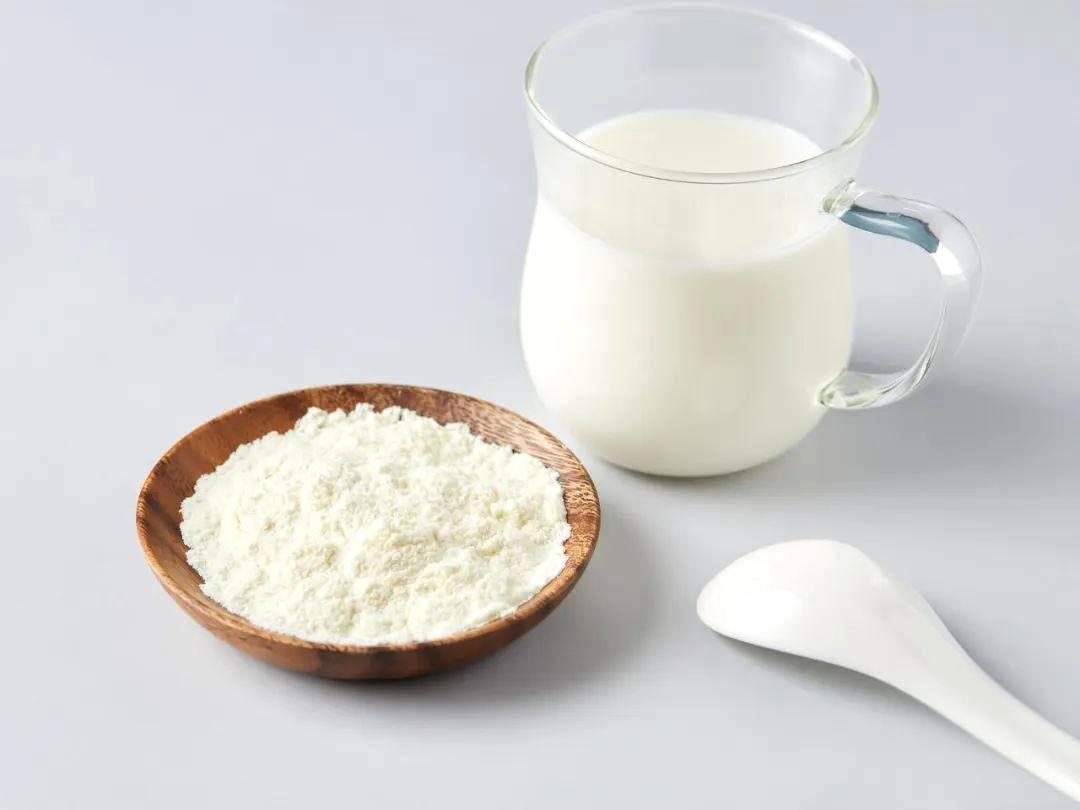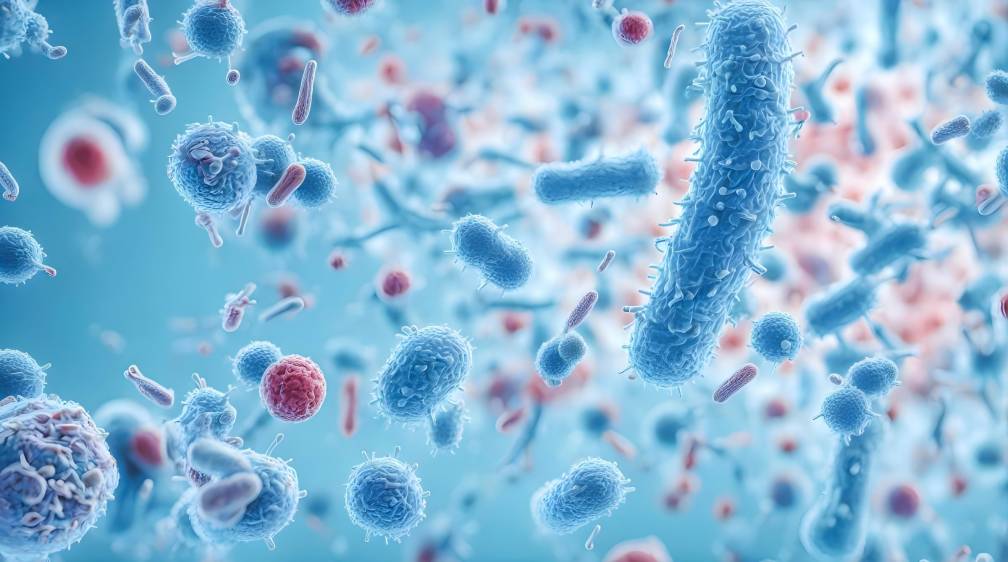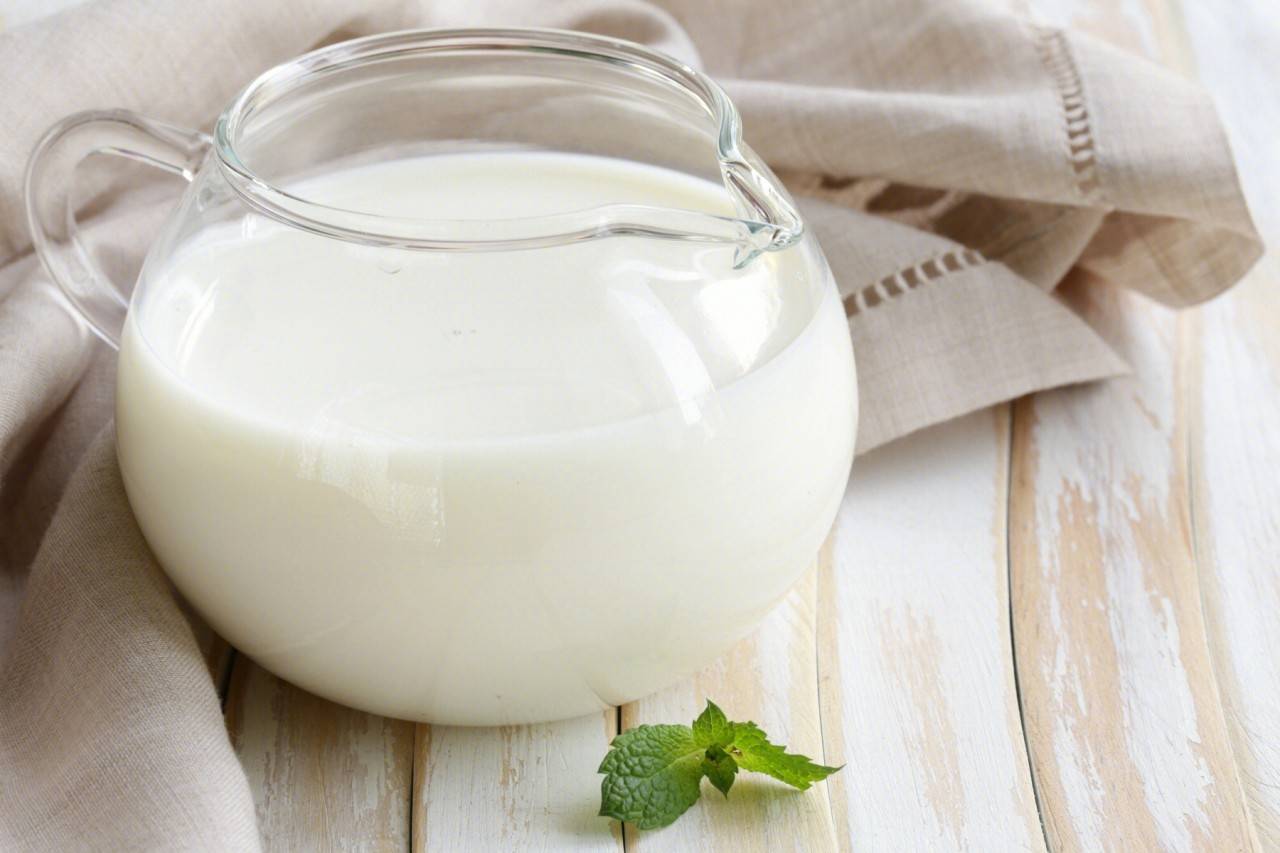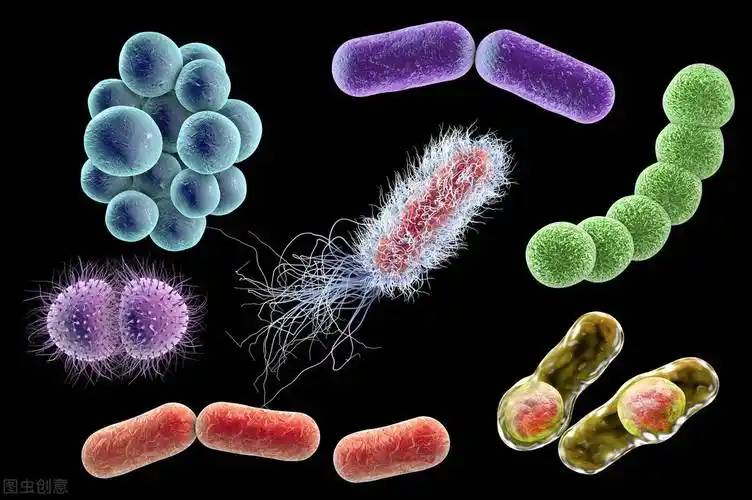What Are the Test Methods of Galactooligosaccharide Powder?
Galactooligosaccharides (GOS) are formed by linking 2 to 8 monosaccharides via β-glycosidic bonds to form a straight-chain oligosaccharide. They cannot be digested and absorbed in the upper digestive tract of the human body, and can directly enter the large intestine. After extensive research by scientists at home and abroad, galacto-oligosaccharides have been found to have a number of nutritional benefits, including low energy, promoting the growth of bifidobacteria in the intestines, improving the absorption of minerals and preventing osteoporosis, improving lipid metabolism, preventing and treating constipation, being less cariogenic, generating nutrients, improving nutritional status, boosting immunity, enhancing anti-tumour and anti-aging effects, etc. [1-2].
Galacto-oligosaccharides have been widely used in Japan as a sweetener, sugar substitute, food ingredient, and functional food ingredient, and are added to various types of food. The Ministry of Health of the People's Republic of China has approved GOS as a new resource food and allows it to be added to infant foods, dairy products, beverages, baked goods, and candy (Ministry of Health of the People's Republic of China Announcement No. 20 of 2008, Ministry of Health of the People's Republic of China Announcement No. 12 of 2007) [3].
Because galacto-oligosaccharides are a mixture of galactose-based oligosaccharides with a degree of polymerization ranging from 2 to 8 and more than 15 components [4], there are certain difficulties in detecting them using external standards, so galacto-oligosaccharide detection technology is the focus of research on oligosaccharide detection. The following describes the research status, problems and research directions of galacto-oligosaccharide detection technology at home and abroad.
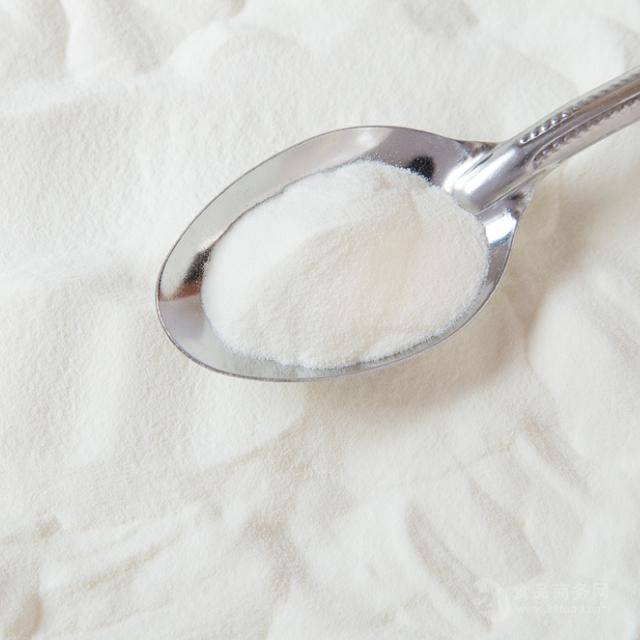
1 Research status of oligosaccharide detection methods
Galacto-oligosaccharides are oligosaccharides, and the separation and detection technology of oligosaccharides has always been the focus of research by scientific researchers. Richard C et al [5] used paper chromatography to detect lactulose and soy oligosaccharides in infant formula milk in 1986, Takamitsu chaka et al [6] used thin layer chromatography to separate alginate oligosaccharides, and Splechtna B etal [7 used thin-layer chromatography to analyze the oligosaccharides in transglycosylation products.
There have been relatively more studies on the separation and detection techniques of oligosaccharides using high-performance liquid chromatography (HPLC) [8]. HPLC mainly utilizes the characteristics of oligosaccharides, which are easily soluble and can be effectively separated on sugar columns, amino columns, and gel columns. It is generally detected using a differential refractive index detector. With the progress of technology, Antonopoulos A et al [9] used an evaporative light scattering detector (ELSD) to detect oligosaccharides. The detection limit of the ELSD is 1-2 orders of magnitude higher than that of the differential refractometer, and it has a better prospect. Hirotaka Kakita et al [10] derivatized monosaccharides and oligosaccharides with fluorescein and using HPLC method detection achieved good results.
With the development of technology, there have also been studies on the separation and structural analysis of oligosaccharides using mass spectrometry. Lin Qinbao et al. [11] used gas chromatography-mass spectrometry to determine the monosaccharide composition of jujube oligosaccharides. The results showed that the monosaccharide composition of jujube oligosaccharides was arabinose, rhamnose, ribose, mannose, galactose and glucose. At the same time, the composition of monosaccharides in jujube was fructose and glucose, which achieved good results. Broberg A [12] used high-performance liquid chromatography tandem ion trap mass spectrometry for the analysis of oligosaccharides. Ying Liu et al [13] used liquid chromatography and liquid chromatography tandem electrospray ionization mass spectrometry for the separation and identification of oligosaccharides.
In addition, Feng Yongmei et al. [14] used a 001×7 cation exchange resin column to separate and purify a mixture of oligosaccharides (GOS), and then used thin layer chromatography to analyze the purification results. Kamoda S et al. [15] used a laser-induced fluorescence detector to analyze N-linked oligosaccharides separated by capillary electrophoresis, and also achieved good results. Dreisewerd K et al [16] also obtained good results using thin-layer chromatography to separate oligosaccharides from raw cow's milk, and then using matrix-assisted laser desorption/ionization time-of-flight mass spectrometry for analysis.
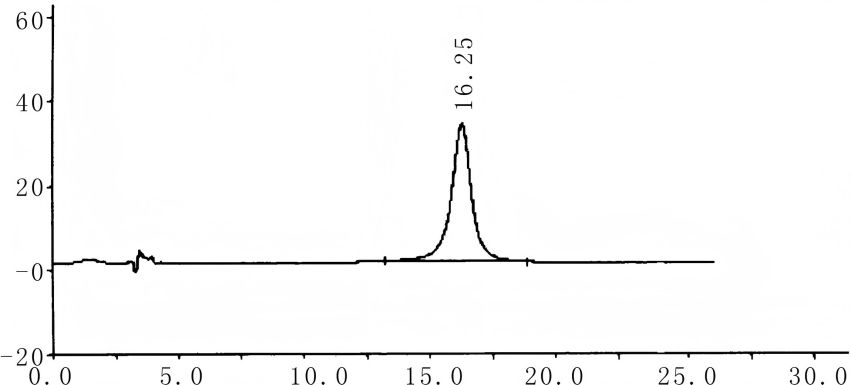
The following is a detailed introduction to the methods for detecting galacto-oligosaccharides, which are based on the more widely studied analytical methods: thin layer chromatography, gas chromatography, liquid chromatography and ion chromatography.
1.1 Thin layer chromatography
Li Yumei et al. [17] analyzed a β-galactosidase transglycosylation fermentation product with a galactooligosaccharide content of 30%. Two methods were used: thin-layer chromatography and HPLC. For thin-layer chromatography, a silica gel 60 plate was used, and the developing solvent was n-butanol: ethanol: water = 5: 3: 2 (by volume). The colorant was 20% sulfuric acid solution + 0.5% 3,5-dihydroxytoluene. The sugar was baked at 120 °C for 3–5 min, and then ImageJv1.28 software for quantitative analysis.
Lu Wenwei et al. [18] used thin layer chromatography and adjusted the developing agent to: n-butanol: n-propanol: ethanol: water = 2: 3: 3: 2 (volume ratio) to analyze the content of oligosaccharide galactose (content more than 20%) in the transglycosylation product.
Xu Mudan et al. [19] used ascending thin-layer chromatography with a silica gel G layer and n-butanol: water = 85:15 as the developing solvent to detect the content of each sugar component in the transglycosylation products (oligosaccharide galactose content greater than 20%) using aniline-diphenylamine-phosphoric acid solution as the color developer.
Li Zhengyi et al. [20] used the same thin-layer chromatography method as Li Yumei et al. [17] to analyze the content of oligosaccharides in low-lactose milk. Due to the high lactose hydrolysis rate, which exceeded 70%, the GOS content exceeded 20%, so there was very little interference from lactose. The Aminex HPX-42C (300 mm × 7.8 mm) sugar analysis column was used, and the HPLC conditions were as follows: ultra-pure water as the mobile phase, column temperature 70 °C. The chromatographic peaks of the transferred disaccharides and lactose overlapped, resulting in a lower detection result for the galactooligosaccharide content and a higher detection result for the lactose content.
Wu Hao et al. [21] conducted a systematic study on the analysis of oligosaccharides and their derivatives by high-performance thin-layer chromatography. Experiments were carried out to optimize the thickness of the thin layer, the salt effect of the stationary phase, the concentration of the silica gel binder, the technique of spot sampling and the selection of the developing agent, and the optimization of the color developer, etc., to determine a suitable method. However, the method is suitable for samples with high and low oligosaccharide content and low lactose and galactose content.
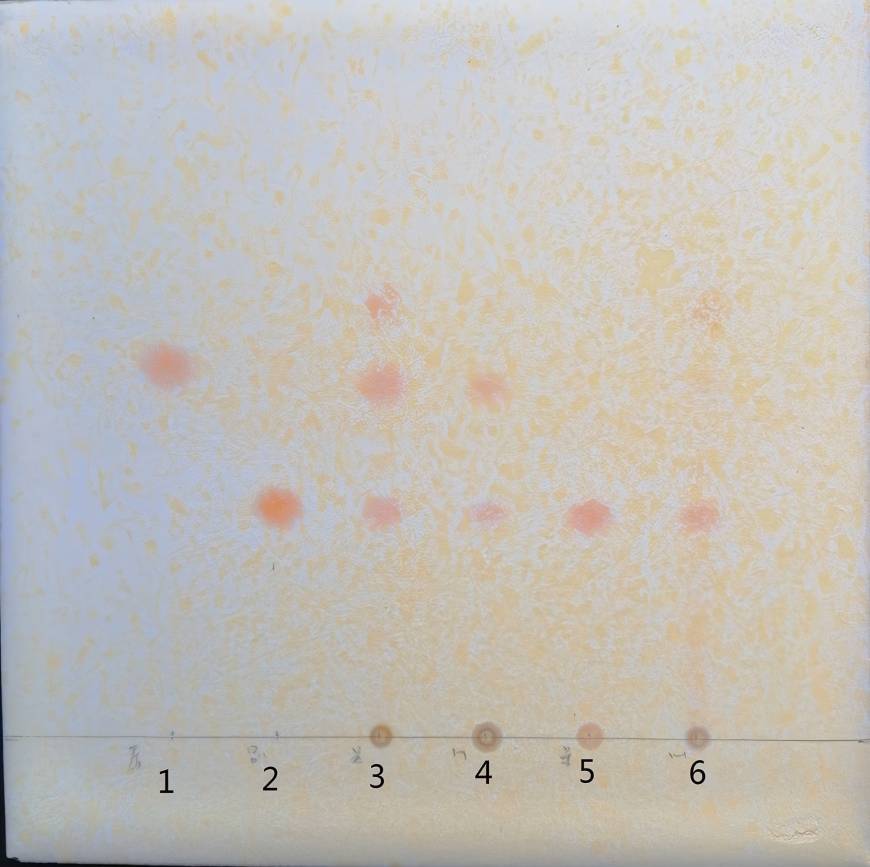
1.2 Gas chromatography
With the development of gas chromatography and derivatization technology, some people also use gas chromatography to separate and detect carbohydrates. Due to the high molecular weight and high boiling point of sugars, polysaccharides are first hydrolyzed into monosaccharides, and then derivatization reagents are used to derivatize monosaccharides into substances that are easy to vaporize, and gas chromatography is used to separate and quantify. Therefore, gas chromatography is mainly used to analyze the composition and content of monosaccharides, and the operation is relatively complicated.
Liu Jianfu [22-23] hydrolyzed and derivatized the separated and purified oligosaccharide galactose sample and analyzed it using gas chromatography. The experiment used an OV1701 quartz capillary column (30 m, I.D. 0.32 mm), and the approximate structure of the separation product was determined based on the ratio of the peak areas of the measured glucose and galactose. However, no quantitative method was given.
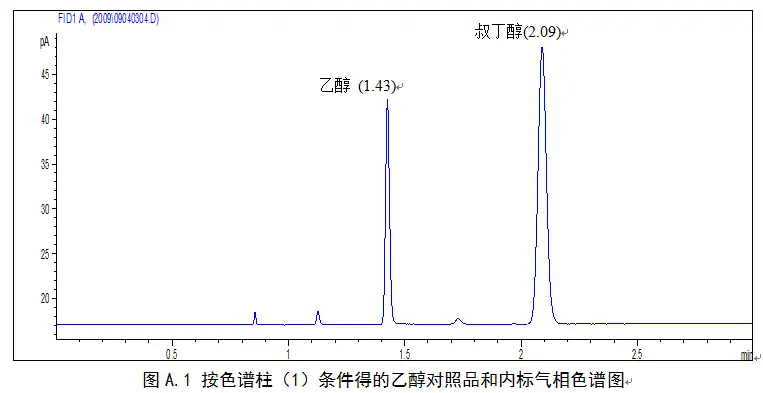
1.3 Liquid chromatography
High-performance liquid chromatography is currently the most common method for the detection of monosaccharides and oligosaccharides. The researchers mentioned earlier also used liquid chromatography in combination with thin-layer chromatography to analyze the oligosaccharides in transglycosylation products. For example, Li Yumei et al. [17] also used HPLC to analyze the oligosaccharides in the transglycosylation products. The syrup was filtered through a 0.22 μm filter membrane, and tristilled water was used as the mobile phase. The column temperature was 80 °C, and the Aminex HPX-42A (300 mm × 7.8 mm) sugar analysis column was used. Lu Wenwei et al. [18] also used HPLC to determine the content of oligosaccharide galactose in the transglycosylation product. The mobile phase was 5 mmol/L sulfuric acid, the column temperature was 50 °C, and the column was Aminex HPX 87H.
Barroso Begona et al [24] used online high performance liquid chromatography/time-of-flight mass spectrometry to analyze the structure and type of oligosaccharides derived from glycoproteins, and analyzed N-linked and O-linked oligosaccharides, with good results.
Luo Qian et al. [25] studied the method of pre-column derivatization of oligogalactose using 1-phenyl-3-methyl-5-pyrazolone (PMP), and used silica gel column chromatography combined with thin layer chromatography to separate and detect oligogalactose in raw sugar syrup. Using a UV detector at a wavelength of 245 nm, galactose, glucose lactose, trisaccharides, tetrasaccharides and pentasaccharides. This method can be used for indirect quantification.
Wu Hongjing et al. [26] used a reversed-phase high-performance liquid chromatograph with water as the mobile phase to separate and analyze a mixture of starch containing 2–6 glucose polymers obtained by enzymatic hydrolysis, and also achieved good results.
Li Jingfang et al. [27] studied the method of determining the content of oligogalactose in dairy products and syrups by high performance liquid chromatography. Water and acetonitrile were used as the mobile phase, and an amino column was used to separate glucose, galactose and lactose from other substances. The content of oligogalactose in the sample was calculated by measuring and calculating the content of galactose produced by enzymatic hydrolysis of oligogalactose. The relative standard deviations of glucose, galactose, lactose and oligosaccharide were 2.72%, 4.16%, 1.16% and 4.26% respectively. The linear correlation coefficient of this method was 0.9990-0.9995, and the recovery rate was 95%-110%. This method does not solve the problem of separating galactose and glucose in the sample solution after hydrolysis, nor does it determine the conversion factor for converting galactose to oligosaccharides, so it is of limited significance.
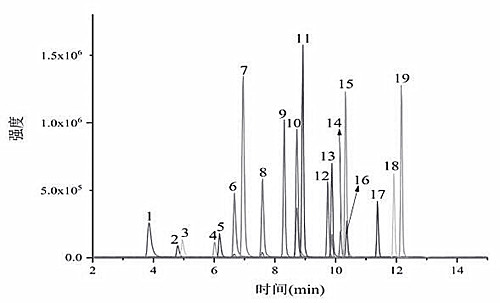
1.4 Ion chromatography
Ion chromatography is a relatively new technique for the detection of monosaccharides and oligosaccharides. It has the advantages of high sensitivity and good separation efficiency. The ion chromatography method for the detection of galacto-oligosaccharides was first published as an official standard method by the American AOAC. Other research on the ion chromatography method for the detection of galacto-oligosaccharides is mainly focused on improving the AOAC standard method.
1.4.1 American AOAC 45.4.12-2001.02 standard
The theoretical basis for the AOAC 45.4.12-2001.02 standard “Determination of trans-Galactooligosaccharides (TGOS) in Selected Food Products” is the use of a specific, exclusive β-galactosidase to hydrolyze lactose and galacto-oligosaccharides in the sample, with glucose and galactose as the products. The galactose content from the hydrolysis of lactose is then calculated using the lactose content detected in the sample. content of galactose from the source of lactose hydrolysis. Finally, the total galactose content in the sample solution is subtracted from the free and lactose hydrolysis-derived galactose content, and then the galactose increment is multiplied by a factor to calculate the content of galacto-oligosaccharides (GOS) in the sample. The operation and calculation steps of this standard are as follows:
① Measure the amount of free galactose and lactose using IC;
② Calculate the amount of galactose derived from lactose;
③ Hydrolyze the lactose and TGOS in the sample;
④ Measure the amount of total galactose in the hydrolysate using IC;
⑤ Calculate GALGOS = GALT – GALfree – GALLAC;
⑥ Calculate TGOS = k × GALGOS.
Note: Here k = (180 + 162 n)/(180 n), where n is the average number of galactose units in a molecule of oligosaccharide galactose.
There are two technical problems with this standard method for the detection of oligosaccharide galactose:
(1) The calculation factor in the AOAC 45.4.12-2001.02 standard is calculated from the degree of polymerization of oligosaccharides. However, in practical tests, the degree of polymerization of oligosaccharides cannot be accurately measured due to the complexity of the oligosaccharide components caused by different production processes. Because there is no uniform conversion factor, this method can only give an idea of the testing method and is of little significance for generalization.
2) Because the quantitative basis is the increase in galactose in the sample, the amount of lactose or carbohydrates containing galactose in the sample to be tested is the most important factor affecting the accuracy of the test results (as explained in the standard). The lactose content of foods, especially milk powder (≥40 g/100 g), is much higher than the added GOS content (≤1 g/100 g), so the galactose content derived from lactose hydrolysis is higher than 20 g/100 g. The galactose content obtained from GOS hydrolysis does not exceed 5% of the total galactose content. From the analysis of sample treatment and instrumental analysis results, this 5% increase can be considered as very good parallel results. It cannot be used to calculate the GOS content, so this method is not suitable for samples with high lactose content.
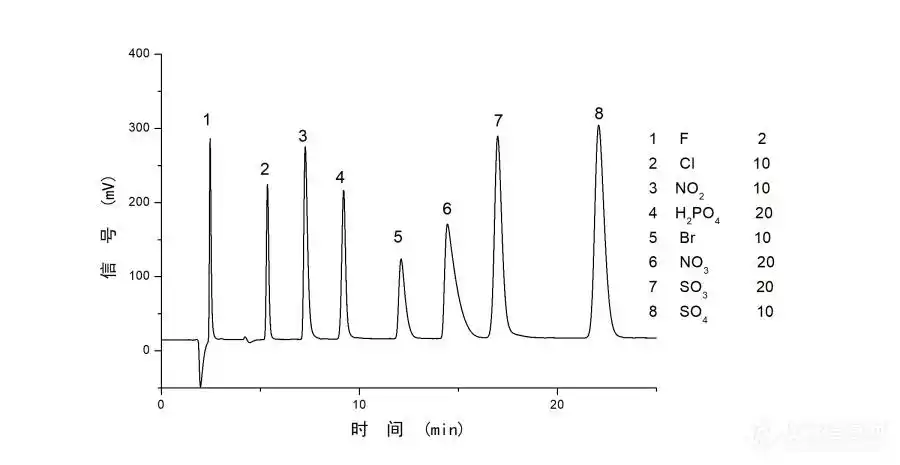
1.4.2 Other ion chromatography detection methods
Studies on the determination of galacto-oligosaccharide content using ion chromatography are basically based on the AOAC 45.4.12-2001.02 standard. The main research has been carried out on the column type, the gradient and concentration of the mobile phase, the amount of β-galactosidase added, etc. Some researchers have also used ion chromatography-mass spectrometry for some research.
Bruggnk C et al [29] used ion exchange chromatography and single quadrupole mass spectrometry in tandem to study the separation and analysis of monosaccharides, disaccharides, trisaccharides and oligosaccharides in chicory coffee, honey and beer samples.
Li Jianwen et al. [30] determined the oligosaccharide content in raw sugar syrup by high-performance ion chromatography with pulsed amperometric detection based on the AOAC-2001.02 method and optimized the gradient of the eluent.
Xu Li et al. [31] studied the method for determining the content of oligogalactose in syrup by ion chromatography with a CarboPac PA10 (2 mm × 250 mm) column and an amperometric detector using a gradient elution with water, 250 nmol/L NaOH solution and 1 mol/L sodium acetate solution as the reference AOAC-2001.02 method. The content of each component (lactose, galactose, glucose and oligogalactose) in the syrup was determined. the content of each component (lactose, galactose, glucose and oligosaccharides) in the syrup.
2 Problems with existing methods
2.1 Sample versatility
Although there are many techniques for the detection of galacto-oligosaccharides, they are mainly used for samples with high galacto-oligosaccharide content, such as galacto-oligosaccharide raw syrup and invert sugar products. Including AOAC standards, the food samples involved are also mainly the detection of galacto-oligosaccharide content in food samples with low lactose content and low galactose content.
2.2 Applicability of external standard method
The industrial production of lactase uses different sources, and the production processes used by each manufacturer also differ to some extent, resulting in the complexity of the types and proportions of oligosaccharide components. The use of external standard methods for detection presents technical difficulties such as the difficulty of preparing standards and the high technical requirements for chromatographic separation. Therefore, it is unlikely that the external standard method can be used for research on detection methods.
2.3 Empirical conversion factor
β-galactosidase is used to hydrolyze lactose and oligosaccharides in the sample, and the content of oligosaccharides in the sample is calculated by the increase in galactose. A conversion factor needs to be calculated using the average number of galactose units (average degree of polymerization of galactose units) in the oligosaccharides in the sample. Due to the complexity of the oligosaccharide composition, there is currently no universal conversion factor, so that even if the galactose increment from the oligosaccharides is measured, it is not possible to calculate the oligosaccharide content of the sample.
2.4 Lactose content in the sample
Considering the idea of using the AOAC-2001.02 method, we must detect the increased amount of galactose derived from oligomeric galactose in the sample. Therefore, if the content of free galactose, lactose or oligosaccharides containing galactose in the sample is very high, such as dairy products, the removal of free galactose, lactose or oligosaccharides containing galactose in the sample needs to be addressed. However, this issue was not studied in the above-mentioned research were not studied.
3 Research direction of the detection method for oligosaccharides in food
As the only internationally published standard for the detection of oligosaccharides is AOAC 45.4.12 -2001.02 “Determination of trans-Galactooligosaccharides (TGOS) in Selected Food Products”, there is no national or industrial standard for the detection of oligosaccharides in China. The results of other studies have more shortcomings when applied to the determination of oligosaccharides in foods. Therefore, the research on the detection method of oligosaccharides in foods should be based on the AOAC method, focusing on solving the following two problems.
3.1 Average degree of polymerization of commercial oligosaccharides
By studying the oligosaccharide composition and proportion in commercial oligosaccharide raw materials, the average degree of polymerization of oligosaccharides can be determined and calculated, and then a conversion factor for calculating the oligosaccharide content using the galactose increment can be calculated to solve the problem of calculating the results of the AOAC method.
The main methods for determining the average degree of polymerization of oligosaccharides are high performance liquid chromatography, ion chromatography and mass spectrometry.
The HPLC method can use polymerization degree analysis and amino column analysis to calculate the average polymerization degree of oligosaccharides using the area normalization method. The ion chromatography method requires the use of a column suitable for separating oligosaccharides to separate the oligosaccharide raw materials well, measure the molecular weight (or polymerization degree) of each component, and then calculate the average polymerization degree of oligosaccharides using the area normalization method. These two methods are based on the assumption that the oligosaccharide material used for research is converted from pure lactose, that it does not contain galactose, glucose, or oligosaccharides other than oligosaccharides derived from lactose, that each oligosaccharide component of the oligosaccharide material is well separated, that the degree of polymerization of each component is known, and that there is a certain error due to the assumption that the response values of each component are equal.
Mass spectrometry requires measuring the mass-to-charge ratio of each component of oligosaccharides, determining the ion abundance of different mass-to-charge ratios, and calculating the average degree of polymerization of oligosaccharides by the ratio of ion abundances of each degree of polymerization component. The object studied by mass spectrometry should also be oligosaccharides derived from pure lactose, which should not contain oligosaccharides from other sources. It is also necessary to ensure that the disaccharides in lactose and oligosaccharides are well separated, and that the ion abundance response values of each polymerization degree component are the same (most importantly, the number of charges on each ion must be equal). There is also a certain error.
Although there is some error in the above methods for measuring degree of polymerization, by analyzing the acceptable level of error and the operability of the measurement method, it should be possible to establish a conversion factor for oligosaccharides similar to that for proteins.
3.2 Study of the universality of measurable samples
Because the oligosaccharide content in the sample needs to be calculated by measuring the increase in galactose in the sample, the content of free lactose and galactose in the sample is an important factor affecting the accuracy of the measurement result. If the background galactose content is too high, the relative proportion of the galactose increase obtained after hydrolysis will be low, and the measurement error will be relatively large.
Studying and solving the interference of removing free lactose and galactose in sample pretreatment can improve the accuracy of the test results and the universality of the test method for samples, especially dairy products. The removal of free lactose and galactose in the sample can be considered by solid phase extraction, microbiology, and chromatographic preparation techniques. However, because the target substance and lactose and galactose are all sugars with the same structure, this research will be more difficult and require greater investment.
In addition, the effect of charged ions in the sample, especially divalent ions, on the ion chromatography column needs to be considered during sample pretreatment, and the removal technology for these ions needs to be studied.
4 Conclusion
Although the research on the detection technology of oligosaccharides is challenging, with the continuous improvement of people's living standards, foods added with oligosaccharides will be increasingly valued by consumers. The development and production of foods added with oligosaccharides with probiotic functions will be the development trend. From the current domestic food quality and safety situation and consumers' ever-increasing demand for food quality, it is particularly important to research and develop a detection method for the oligosaccharide content in foods. Researching and developing a standardised testing method for the content of oligosaccharides in food will not only provide enterprises with suitable testing methods and strengthen the control of the production process; it will also provide testing methods for food quality supervision and inspection departments and provide a reference for research on testing techniques for other oligosaccharide components in food.
References:
[1] Mao Genian, Xu Mudan. Functional Food Physiological Characteristics and Testing Technology [M]. Beijing: Chemical Industry Press, 2005: 103-117
[2] Van Loo J,Cummings J,Delzenne N,et al. Functional food properties of non-digestible galactooligosaccharides: a consensus report from the ENDO project (DGXII AIR II-CT94-1095)[J]. British Journal of Nutrition, 1999, 81:121-132
[3]Announcement of the Ministry of Health of the People's Republic of China (No. 12 of 2007) [J]. Chinese Journal of Food Hygiene, 2007, 19(6): 571-573
[4]Zhang Zhiguo. Research progress and application of functional oligosaccharides [J]. China Food Additives, 2012(6): 207-213
[5]Richard C, Beach I M. Determination of lactulose and soya oligosac- charides in infant formula milk feeds[J]. J Dairy Research, 1986, 53: 293-299
[6] Takamitsu chaka, Hdeto Akmi, Akihiro Shbata, et al. Detection of alginate oligosaccharides from mollusks[J]. Biosci Biotechnol Biochem, 2006, 70(11):2793-2796
[7]Splechtna B, Nguyen TH, Steinbck M, et al. Production of prebiotic galacto -oligosaccharides from lactose using beta -galactosidases from Lactobacillus reuteri [J] . J Agric Food Chem, 2006, 54 (14): 4999-5006
[8]Shaw P E. Handbook of sugar separations in foods by HPLC[M]. Bo - ca Raton: CRC Press Inc, 1988:27-30
[9]Antonopoulos A, Favetta P, Lafosse M, et al. Characterisation of io- ta-carrageenans oligosaccharides with high -performance liquid chromatography coupled with evaporative light scattering detection [J]. ChromatogrA, 2004, 1059(1/2):83-87
[10] Hirotaka Kakita, Hiroshi Kamishima, Katsuo Komiya, et al. Simulta - neous analysis of monosaccharides and oligosaccharides by high - performance liquid chromatography with postcolumn fluorescence derivatization[J]. ChromatogrA, 2002, 961(1):77-82
[11] Lin Qinbao, Jiang Meifeng, Yang Chun. Determination of the monosaccharide composition of jujube oligosaccharides by gas chromatography-mass spectrometry [J]. Food Science, 2009, 16: 210-212
[12]Broberg A. High -performance liquid chromatography/electrospray ionization ion -trap mass spectrometry for analysis of oligosaccha- rides derivatized by reductive amination and N,N-dimethylation[J]. Carbohydr Res, 2007, 342(11):1462-1469
[13] Ying Liu, Sameer Urgaonkar, John G Verkade, et al. Separation and characterization of underivatized oligosaccharides using liquid chromatography and liquid chromatography-electrospray ionization mass spectrometry[J]. ChromatogrA, 2005, 1079(1/2):146-152
[14] Feng Yongmei, Chang Xiulian, Wang Wenhua, et al. Rapid and efficient separation of oligosaccharides by ion exchange chromatography [J]. Food and Fermentation Technology, 2009, 35(3): 179-182
[15] Kamoda S, Ishikawa R, Kakehik. Capillary electrophoresis with laser -induced fluorescence detection for detailed studies on N - linked oligosaccharide profile of therapeutic recombinant mono-clonal antibodies[J]. ChromatogrA, 2006, 1133(1/2):332-339
[16] Dreisewerd K, Klbl S, Peter-Katalinic J, et al. Analysis of native milk oligosaccharides directly from thin -layer chromatography plates by matrix -assisted laser desorption/ionization orthogonal - time-of-flight mass spectrometry with a glycerol matrix[J]. J Am Soc Mass Spectrom, 2006, 17(2):139-150
[17] Li Yumei, Lu Lili, Xiao Min. Identification of the transglycosylase strain F3, enzyme production conditions and transglycosylation activity research [J]. Journal of Shandong University: Science Edition, 2009, 44(1): 1-6
[18] Lu Wenwei, Kong Wentao, Kong Jian, et al. Study on the transglycosylation activity of Lactobacillus fermentum β-galactosidase [J]. Journal of Shandong University: Science Edition, 2008, 43(7): 83-87
[19] Xu Mudan, Zhang Juntao, Fan Jinbo, et al. Study on the synthesis of oligosaccharides from whey powder by immobilized lactase hydrolysis [J]. Food Science and Technology, 2006(1): 122-125
[20] Li Zhengyi, Xiao Min, Lu Lili, et al. Production of low-lactose milk containing oligosaccharides by transglycosylase β-galactosidase [J]. Food Science, 2007, 25(5): 241-244
[21] Wu Hao, Ding Ding, Yang Sihang. High-efficiency thin-layer chromatography for the analysis of oligosaccharides and their derivatives [J]. China Dairy Industry, 2001, 29(2): 25-28
[22] Liu Jianfu. Kluyveromyces fragilis LFS-8611 β-D-galactosidase catalyzes the synthesis of oligogalactose [D]. Wuxi: Jiangnan University, 2004
[23] Liu Jianfu, Chen Qingsen, Wang Zhang. Analysis of the composition of oligosaccharides synthesized by K. fragilis β-galactosidase [J]. Food Fermentation Industry, 2005, 31(11): 109-111
[24]Barroso Begona, Dijkstra Rene, Geerts Marlieke, et al. On -line high-performance liquid chromatography/mass spectrometric char- acterization of native oligosaccharides from glycoproteins[J]. Rapid Commun Mass Spectrom, 2002, 16(13):1320-1329
[25] Luo Qian, Wang Xiaodan, Wang Qingqing, et al. Separation and detection of low-molecular-weight galactose mixtures [J]. Food Industry Science and Technology, 2010(10):392-395
[26] Wu Hongjing, Tang Genyuan, Li Zhida, et al. Determination of malt oligosaccharide components by high performance liquid chromatography [J]. Chromatography, 1994(4):289-290
[27] Li Jingfang, Peng Meichun. Determination of oligosaccharide content by high performance liquid chromatography [J]. Food Science and Technology, 2012(7):279-282
[28]Slegte J. AOAC Official Method 45.4.12—2001.02, Determination of trans-Galactooligosaccharides (TGOS) in Selected Food Products [S]. American: J AOAC intern, 2002
[29]Bruggnk C, Maurer R, Herrmann H, et al. Analysis of carbohydrates by anion exchange chromatograph and mass spectrometry[J]. Chro - matogrA, 2005, 1085(1):104-109
[30] Li Jianwen, Wang Zhu, Yang Yuexin. Determination of oligosaccharide content in syrup by high performance ion chromatography [J]. Hygienic Research, 2006(5):584-586
[31] Xu Li, Pan Li, Huen Hoi Chi. Determination method of oligosaccharide content. Food and Fermentation Industry, 2011(2):179-181


 English
English French
French Spanish
Spanish Russian
Russian Korean
Korean Japanese
Japanese